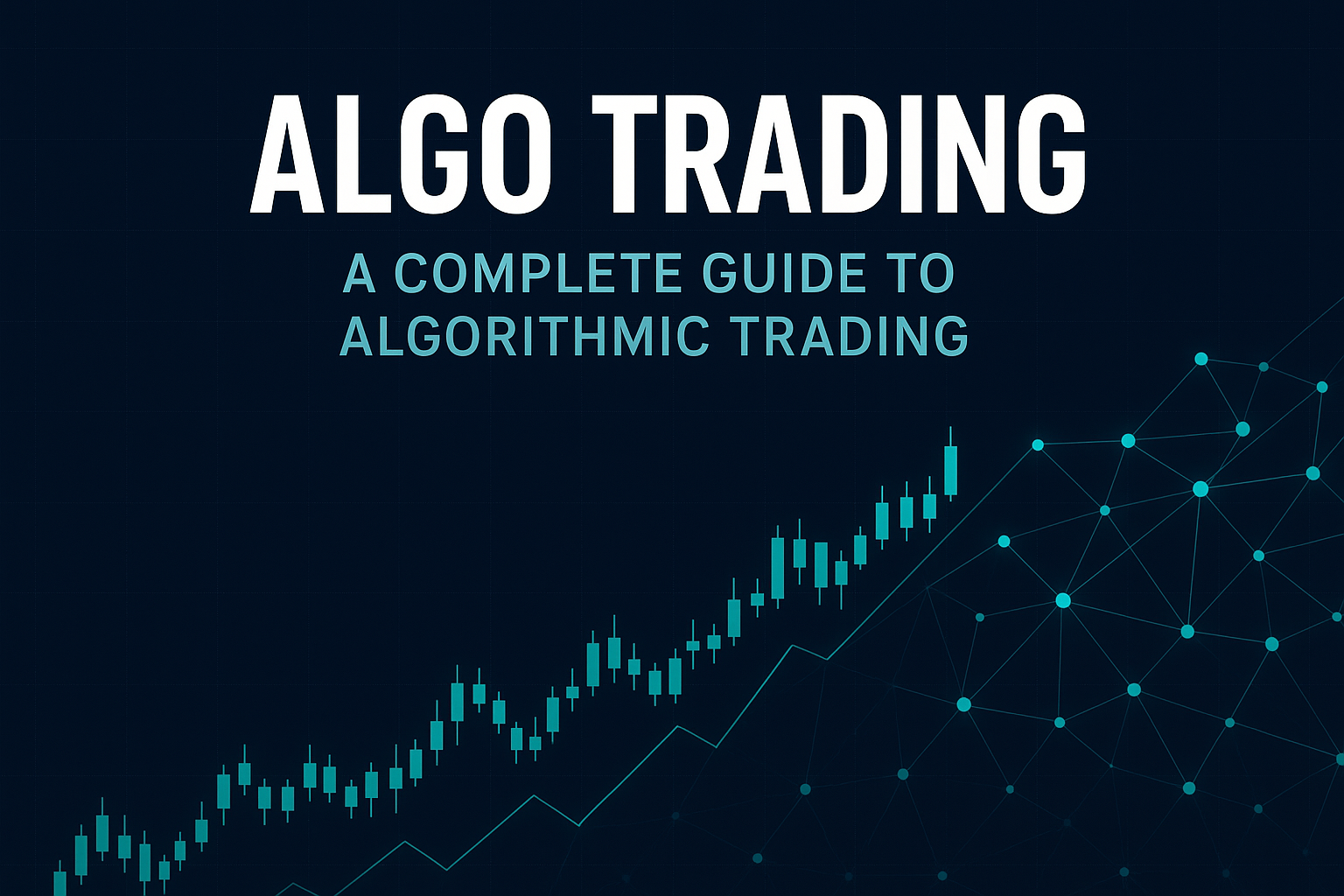What is Algo Trading?
Algo trading (algorithmic trading) is the use of computer programs and algorithms to execute trades in the stock market, forex, or crypto markets. These algorithms are designed to follow predefined rules such as timing, price, and volume.
Unlike manual trading, algo trading eliminates human emotions like fear and greed, enabling faster and more accurate execution.
How Does Algorithmic Trading Work?
Algo trading operates through:
- Market Data Feeds: Real-time market price, order book, and news data.
- Trading Strategies: Mathematical and statistical models coded into algorithms.
- Execution Systems: APIs and direct market access for lightning-fast trades.
- Risk Management: Automated stop-loss, hedging, and position sizing.
- Backtesting: Testing strategies on historical data before going live.
Popular Algo Trading Strategies
- Trend-Following Strategies – Using moving averages and breakouts.
- Arbitrage Opportunities – Exploiting price differences between exchanges.
- Mean Reversion – Prices eventually revert to their average.
- Market-Making – Placing buy/sell orders to profit from spreads.
- Statistical Arbitrage – Using machine learning and statistics to find inefficiencies.
- High-Frequency Trading (HFT) – Executing trades in microseconds.
Benefits of Algo Trading
- ⚡ Speed & Efficiency – Trade execution in milliseconds.
- 🧠 Emotion-Free Trading – No fear or greed.
- 💰 Lower Costs – Optimized execution reduces slippage.
- 🔍 Backtesting Advantage – Validate before going live.
- 📈 Liquidity Improvement – Helps markets with tighter spreads.
Risks and Challenges
While algo trading offers powerful advantages, it also comes with risks:
- Overfitting Models – Works on historical data but fails live.
- System Failures – Bugs, server crashes, or connectivity issues.
- Market Impact – Large automated trades moving prices.
- Regulatory Issues – Compliance with SEBI, SEC, and MiFID II.
AI and Machine Learning in Algo Trading
The integration of AI in trading is transforming algo strategies:
- NLP (Natural Language Processing): Analyzing news, reports, and tweets.
- Reinforcement Learning: Algorithms learning from market behavior.
- Deep Learning Models: Identifying hidden patterns in financial data.
AI-driven algo trading can adapt in real-time, making it more powerful than traditional rule-based systems.
Algo Trading Regulations
- SEBI (India): Mandatory checks, audits, and compliance.
- SEC (USA): Broker-dealer market access rules.
- MiFID II (Europe): Transparency and reporting obligations.
Traders must ensure that their algorithms are compliant to avoid penalties.
Future of Algo Trading
- 🌍 Retail Participation – Platforms like Zerodha Streak, Interactive Brokers, QuantConnect.
- ☁️ Cloud Algo Trading – Using AWS, GCP, and Azure for scalability.
- ⛓️ Blockchain Integration – Smart contracts for settlement automation.
- ⚛️ Quantum Computing – Faster predictive analysis and modeling.
Final Thoughts
Algo trading is no longer limited to hedge funds and large institutions. Retail traders can now access algorithmic trading platforms and design strategies with minimal coding knowledge.
However, success requires:
- Strong quantitative and programming skills
- Risk management discipline
- Knowledge of regulations
The future of algorithmic trading lies at the intersection of AI, cloud technology, and financial innovation.
Do you also want me to create 5 catchy blog title variations (SEO-optimized) so you can choose the best one for publishing?


